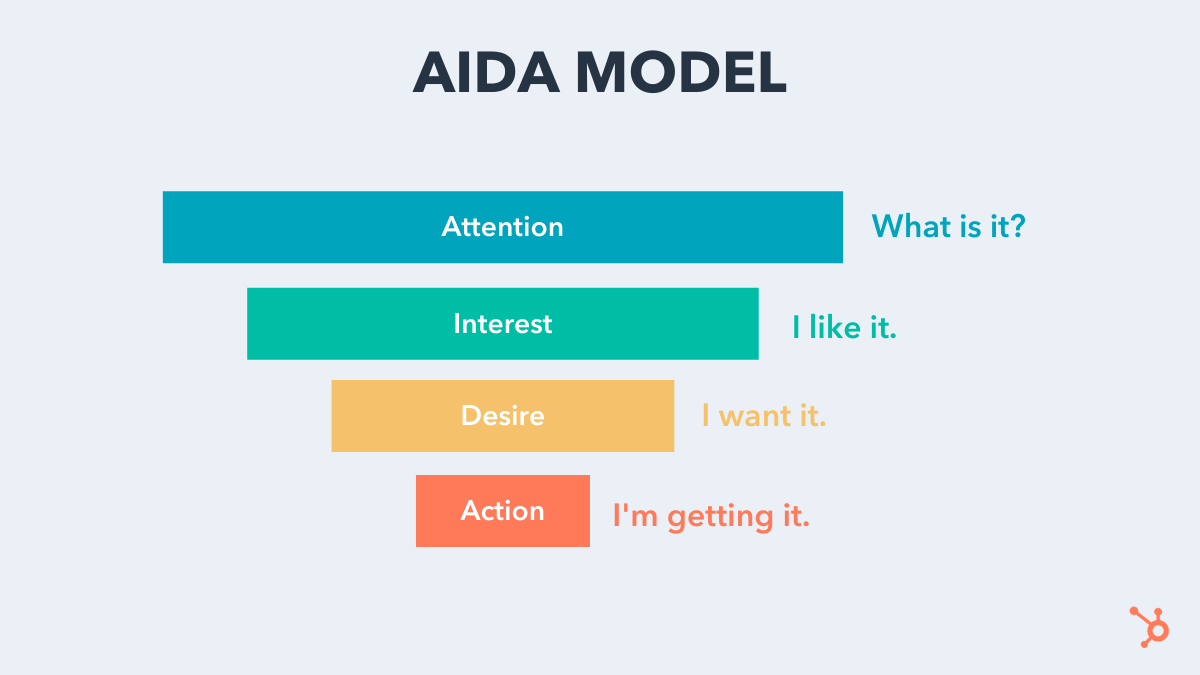What are Marketing Funnels?
Marketing funnels are an effective means to help you picture the route consumers choose from first getting to know your brand to conversion. Knowing marketing funnels offers data that can explain why some consumers convert — and some don’t.
The marketing funnel is an idea adopted to outline how likely consumers are to undergo various stages when engaging with your brand. Learning these stages allows you to encourage prospects to use the funnel and convert them into clients.
St. Elmo Lewis first discovered this approach in 1988. He built a model that described consumers’ journeys. He cited the idea of an AIDA model that refers to ‘Awareness,’ ‘Interest,’ ‘Desire,’ and ‘Action.’ Several people still acknowledge that the AIDA approach performs for every company when supervising a marketing campaign.

Plenty of marketers have applied this concept over many decades, as it accurately represents the buyer’s journey to beginning the marketing funnel. We can also point out this approach as a channel for communication instead of a plain customer-turning model.
This is how the AIDA concept works
- Awareness: Here you will start brand awareness for individuals who engage with your marketing campaign for the first time.
- Interest: This stage intends to grab the public’s notice to generate interest in your brand.
- Desire: now, you’ll unlock a special relationship with your intended public to develop their desire to develop into your clients.
- Action: this phase targets a full conversion by inviting your viewers to take action instantly. In this fashion, you’ll require a call-to-action (CTA) to encourage your prospects to make headway toward developing into clients.
It is straightforward to adapt and carry out the AIDA idea in your marketing campaigns. This funnel allows you to lower prospects by opening your industry through gradual marketing promotional content.
You can’t force new viewers to purchase your brand when they scantily recognize your brand. It’s not practical to jump into a desire or action stage if you skip the awareness phase.
How the Marketing Funnel Works
This funnel approach will continue to be one of the most central sales and marketing concepts for decades.Marketing Funnels depicts the basic steps a customer must experience before purchasing something. People do not simply get up and choose to purchase a new car just for the sake of it. Similarly, people never hang around to buy something until they need it.
Among the leading reasons why people purchase things they don’t require is because big brands know the customer journey. Besides that, they have knowledge of how to start this journey and mentor buyers through it.
What Are Various Funnels?
Here we’re centered on marketing funnels. These are funnels that begin with some kind of marketing campaign. It could be a PPC ad, content marketing campaign, video ad, white paper download, or even a social media ad. The fact is that the first phase of the funnel is a marketing campaign in a way.
Other types of funnels you could hear are:
- Sales funnels
- Homepage funnels
- Webinar funnels
- Lead magnet funnels
- Video marketing funnels
- Email funnels
Regardless of the various names, these all follow the same old story — the phases a prospective buyer takes to convert.
What Does the Marketing Funnel Look Like Today?
Today, we have more varieties of the marketing funnel than in the past. To be honest, it doesn’t really matter which variant of the funnel you wish to take advantage of as a template because the principles are roughly identical.
This five-step funnel will help you do this. Every fruitful sale expects users to undergo the first three steps. Regarding the other two, you expect every consumer to arrive at these stages of the buying process.
- Awareness: The minute your customer finds your product, brand, service, offer, etc., for the first time.
- Consideration: They’re excited but not willing to purchase now — maybe analyzing you against the rival or awaiting an amazing offer.
- Conversion: When a customer finally buys (hopefully it’s your product).
- Loyalty: Buyers who always buy from you and have difficulties going elsewhere.
- Advocacy: Buyers who strongly recommend you to likely customers.
The most important factor here is that your marketing funnel isn’t complete with the purchase. There is a lot more work ahead currently. You can include as many steps into this funnel as you believe to be compulsory for your brand, but then again, it’s up to you to decide how difficult your marketing funnel needs to be. You can also extend it as time goes by as your plan becomes more successful and fresh avenues emerge.
You need an effective marketing strategy for a powerful marketing funnel. Doesn’t matter if it’s the traditional AIDA approach or the latest sales funnel approach, every stage matters. There is no mysterious formula for building leads. You just have to hand over the right content and framework to your targeted buyers at the right phase of the sales funnel.
Indeed, finding your brand’s content on social media is extremely impactful. It’s your dominant lead generation tool. But what you must understand when posting content is quality and consistency. We can handle the latter by using a social media marketing tool, which supports you in auto-scheduling and publishing blogs or articles. Thus, your brand steals the show while you concentrate on other major jobs at hand.



